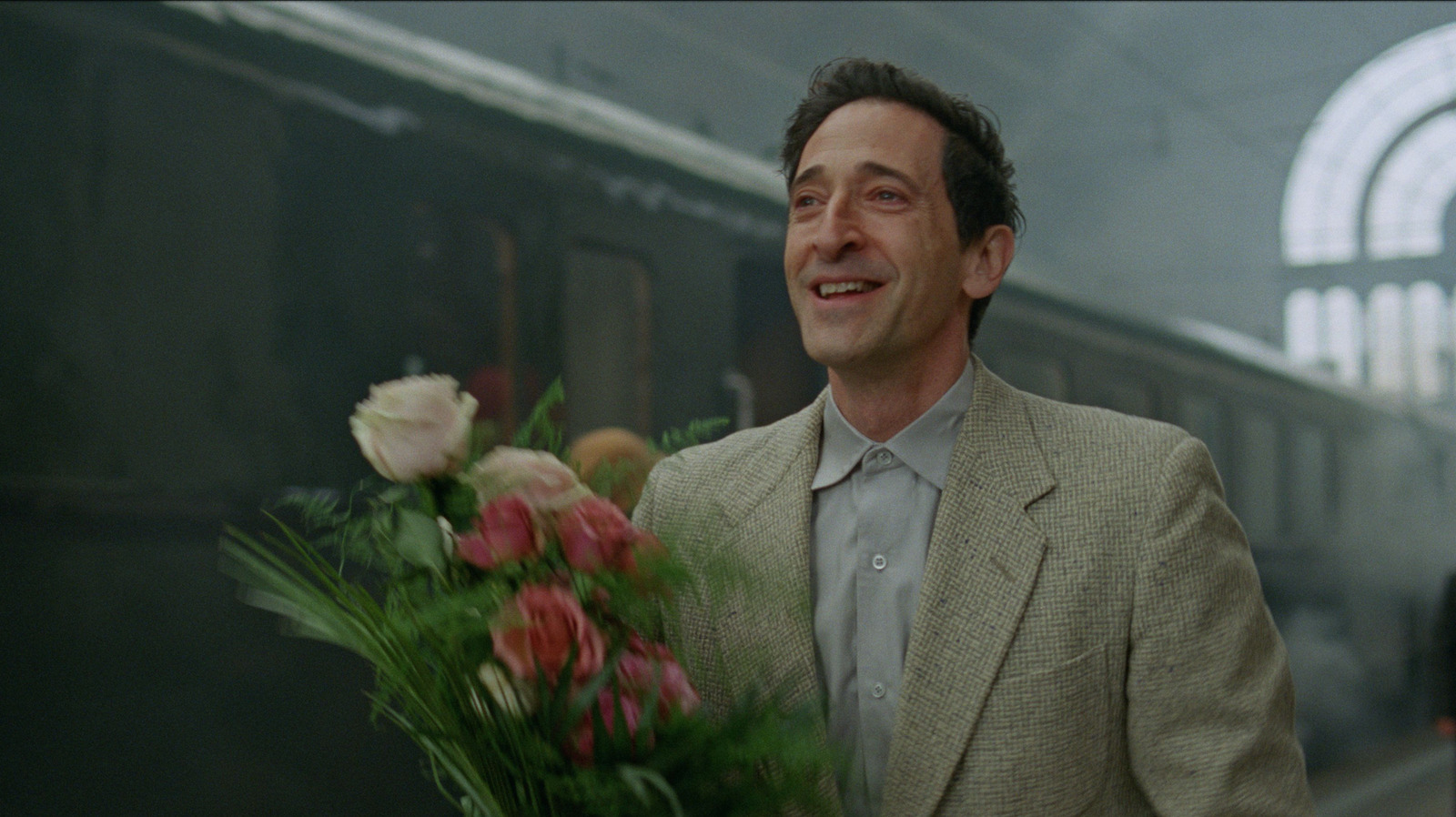

We must be careful how we throw around the word “masterpiece,” and yet it seems entirely appropriately for Brady Corbet’s towering achievement “The Brutalist.” Years in the making (at one point, a completely different cast was announced for the film), Corbert’s sprawling, nearly four-hour epic is cut from the same cloth (or perhaps I should say chiseled from the same stone) as great masterpieces like “Citizen Kane,” “The Godfather,” and more recently, “There Will Be Blood.” And like those three movies, “The Brutalist” is a distinctly American masterpiece; a story that reflects the triumphs and horrors of the ethereal thing we call “The American Experience.” These are stories of great men bursting with wild, potentially dangerous ambition and how they found a way to encase that ambition in the still-developing America of the past, an ever-changing, ever-growing thing impossible to pin down.
All of Corbert’s films are like mock history lessons; biopics for people who never existed, but feel real. His feature debut, the ominous “The Childhood of a Leader,” told the story of the youth of a dictator-to-be in early 20th century Europe. Corbert followed that with “Vox Lux,” a gloriously deceptive story of an American pop star in the 2000s (the film was released in 2018, but Corbet says he deliberately had the film’s timeline end in 2017 “so viewers watching it in 2018 would receive it as a recent history as opposed to a contemporary movie”). Now, with “The Brutalist,” Corbet, working with frequent co-writer Mona Fastvold, is telling the story of an immigrant rising up in post-World War II America.
Spanning decades (the film begins in the late 1940s and ends in the 1980s), “The Brutalist” is nothing short of overwhelming; a staggering, brilliant, gorgeous work that demands to be watched large. It feels almost miraculous. Although Corbert’s film runs a whopping 215 minutes (complete with a 15-minute intermission), it never drags. Indeed, this might be one of the fastest three-hour-and-thirty-five-minute movies you’ll ever see. If Corbet had tacked on another full hour to the film, I don’t think I would’ve complained. Even when the intermission arrived, I found myself hoping it would hurry up and end so I could get back to the movie.
Shot in beautiful VistaVision, a technique that allows Corbet and cinematographer Lol Crawley to create vast frames that feel somehow pulled from history itself, “The Brutalist” is cinematic alchemy, heightened and enhanced by meticulous production design and costuming that feels wholly authentic in showcasing its various time periods, aided by a host of brilliant performances, and encompassed by Daniel Blumberg’s pounding, brooding, jazz-infused score — a score Corbet refers to as “both minimalist and maximalist,” creating a sense of movement. One of the best pictures of 2024, one of the best pictures of the last 10 years, “The Brutalist” is the type of movie that reminds you why you love movies.

Leave a Reply